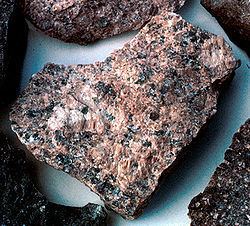 | ||
In geology, the sial refers to the composition of the upper layer of the Earth's crust, namely rocks rich in silicates and aluminium minerals. It is sometimes equated with the continental crust because it is absent in the wide oceanic basins, but "sial" is a geochemical term rather than a plate tectonic term. As these elements are less dense than the majority of the earth's elements, they tend to be concentrated in the upper layer of the crust.
Contents
- Jhangir kabaddi tournament 2017 match shana sial vs waqas bota pakistan youngstars kabaddi match
- Properties
- References
Geologists often refer to the rocks in this layer as felsic, because they contain high levels of feldspar, an aluminium silicate mineral series. However, the sial "actually has quite a diversity of rock types, including large amounts of basaltic rocks."
The name 'sial' was taken from the first two letters of silica and of aluminium. The sial is often contrasted to the 'sima,' the next lower layer in the Earth, which is often exposed in the ocean basins; and the nickel-iron alloy core, sometimes referred to as the "Nife". These geochemical divisions of the Earth's interior (with these names) were first proposed by Eduard Suess in the 19th century. This model of the outer layers of the earth has been confirmed by petrographic, gravimetric, and seismic evidence.
Jhangir kabaddi tournament 2017 match shana sial vs waqas bota pakistan youngstars kabaddi match
Properties
Sial has a lower density (2700–2800 kg/m3) than sima, which is primarily due to increased amounts of aluminium, and decreased amounts of iron and magnesium. The base of the sial is not a strict boundary, the sial grades into the denser rocks of the sima. The Conrad discontinuity has been proposed as the boundary, but little is known about it, and it doesn't seem to match the point of geochemical change. Instead, the boundary has been arbitrarily set at a mean density of 2800 kg/m3.
Because of the large pressures, over geologic time, the sima flows like a very viscous liquid, so, in a real sense, the sial floats on the sima, in isostatic equilibrium. Mountains extend down as well as up, much like icebergs on the ocean; so that on the continental plates the sial runs between 5 km and 70 km deep. Sial has a mean density of 2.7-2.8 grams per cubic centimeter.
